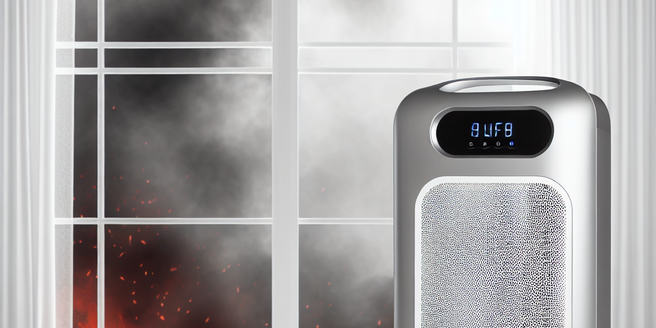
Understanding Wildfire Smoke and Its Hazards
Wildfire smoke is a complex mixture of gases and fine particles produced when vegetation burns. Understanding its composition is essential, as it poses significant health risks. The tiny particles in the smoke can penetrate deep into the lungs, causing respiratory issues and exacerbating conditions like asthma and heart disease. Individuals with pre-existing health concerns, children, and the elderly are especially vulnerable. During wildfire events, air quality can drastically decline, reaching hazardous levels. It’s crucial for communities in affected areas to stay informed and take preventive measures. People are advised to monitor air quality reports, limit outdoor activities, and use protective measures indoors to reduce exposure. The use of high-efficiency air purifiers can significantly mitigate the impact of indoor smoke, making them a valuable tool for maintaining safer air quality.
How Indoor Air Purifiers Work
Indoor air purifiers operate by effectively removing contaminants from the air, improving the overall air quality. Most purifiers use a combination of filters, fans, and technology to capture and neutralize particles like dust, pollen, and smoke. HEPA filters, a common feature in these devices, are capable of trapping particles as small as 0.3 microns with great efficiency. Some advanced purifiers also incorporate activated carbon filters to absorb odors and volatile organic compounds. Additionally, technologies like ionizers or UV light are sometimes employed to tackle microorganisms. The fan within the purifier draws in air, pushing it through the filters where pollutants are captured, and then releases clean air back into the environment. Understanding how these components work together helps in selecting the right purifier for personal needs.
Key Features to Look for in Air Purifiers
When selecting an air purifier for combating wildfire smoke, there are several key features to consider. Firstly, ensure it includes a True HEPA filter, as these are essential for removing fine particles from the air. Additionally, consider models with activated carbon filters, which absorb odors and chemical vapors. Look for a purifier with adequate room coverage, measured in square feet, to ensure it can handle the space where it will be used. Noise levels are another consideration; opt for units that have quieter settings if noise is a concern. Some models come with air quality indicators, providing real-time air updates, and these can be very useful. Finally, check for energy efficiency models to avoid high electricity consumption. With the right features, an air purifier can be a powerful ally against smoke-related air quality issues.
Top Recommended Air Purifiers for Smoke
Choosing the right air purifier is crucial for effective smoke mitigation. Some top recommended models include the Dyson Pure Cool, renowned for its advanced filtration and sleek design. It features both HEPA and activated carbon filters, tackling both particles and odors. The Coway AP-1512HH Mighty is another favorite, known for its impressive performance at a reasonable price, offering a compact size without sacrificing power. For those needing robust coverage, the Blueair Classic 605 provides excellent filtration for larger rooms. Its unique HEPASilent technology combines mechanical and electrostatic filtration for maximum efficiency. For budget-conscious buyers, the Levoit Core 300 is highly praised for its affordable price and efficiency in small to medium spaces. These purifiers are highly effective in improving indoor air quality during smoke-heavy periods.
Maintenance Tips for Optimal Performance
Regular maintenance of your air purifier is essential to ensure its optimal performance, especially during wildfire season. To start, always refer to the manufacturer’s guidelines on filter replacement intervals. HEPA filters typically need replacing every six to twelve months, while activated carbon filters may need replacement more frequently. Keep the purifier’s exterior and air intake vents clean by periodically wiping them with a damp cloth, ensuring unobstructed airflow. Many purifiers have a filter replacement indicator; pay attention to these alerts for timely replacements. If your model includes washable pre-filters, regular cleaning will extend the life of the main filters. Position the purifier in a central location, away from walls and larger objects, to maximize airflow. Proper upkeep will not only extend the life of the purifier but also maintain a healthy indoor environment.
